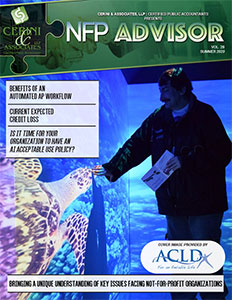
Geode Marketing has created a guide on the Google Grant Program, a Google Ads program for registered 501c3 nonprofit organizations, from how to qualify to ad guidelines for 2022.
What Is The Google Ad Grant?
The Google Ad Grants Program is an amazing opportunity for all nonprofits, as it requires very little to acquire and qualify for the grant. This program gives qualified organizations $10,000 per month in in-kind credit within Google Ads to be used to promote their vision and mission within the Google search engine.
To qualify, companies must go through the application process and maintain grant requirements to avoid termination of the grant. The qualifications are:
- Hold current and valid charity status (for example, in the US you must have a current 501(c)(3) status). If you’re not in the US, you still qualify! Check your country’s definition of charity status.
- Acknowledge and agree to Google Grant’s required terms regarding how to receive and use donations obtained from the grant.
- Have a secure website (https) that is both functioning and provides adequate detail on your nonprofit.
The following organizations are not eligible for Google Ad Grants:
- Governmental entities and organizations
- Hospitals and medical groups
- Schools, childcare centers, academic institutions, and universities
How to Maintain Your Google Ad Grant
Once you’ve scored a Google grant, the tricky part is maintaining it. Below are some of the basic requirements to maintain eligibility.
- Maintain a 5% account CTR.
- Keyword quality scores cannot be below 3.
- There must be at least 2 active ad groups per campaign.
- There must be at least 2 sitelink ad extensions.
- Account must have specific geo-targeting.
- No using single-word keywords, except for those on this list, and no using overly generic words.
- Automated bidding strategies can break the $2.00 bid maximum.
- An account must be logged in at least monthly and have one or more changes implemented every 90 days. If you don’t display active management, Google will suspend your account and you’ll have to request to be reinstated.
All the ads in your account must link to the nonprofit URL that was approved in your application process. Geode Marketing can also help you get websites approved that aid your nonprofit’s mission. These are domains that are different from the approved URL in your application. This could be a website for an annual conference, a fundraiser, or even a project!
The key to Google Ads management is making sure you don’t fall out of compliance. Logging in to the account weekly and checking all of these requirements is recommended. If a nonprofit advertiser does not log into their Google Ads account for an extended period of time, the account may be terminated without notice.
The ads you are promoting must reflect the mission of your nonprofit. You can advertise to sell products as long as 100% of the proceeds are going to support your program. The ads you create cannot point to pages that are used to primarily send visitors to other websites.
Your ads cannot offer financial products, such as mortgages or credit cards. Your ads also cannot be asking for donations in the form of large goods such as cars, boats or property donations. Keywords related to this activity are also not allowed.
Your website cannot display ads from Google AdSense or other affiliate advertising links while participating in Google Grants.
Google states that any violation of these guidelines is subject to removal from the program. They also reserve the right to supplement or amend these eligibility guidelines at any time.
Google Grant Maintenance
To keep the Ad Grant requirements met, daily budget will need to be set at $329 ($10,000 per month) and you cannot have keywords with a Max CPC of over $2.00. This is not the case if you are using a smart bidding strategy such as Max Conversions, tCPA, or Max Clicks. Your ads can also only appear on Google search results page – you cannot enable Search Partners and unfortunately, you are not eligible for the Display Network either. The Google Ad Grant only works with search text ads.
With the basics out of the way, we have included 5 key components to Google Ad Grant management.
1. Conversions Are Key
Google Ads has evolved to focus on higher conversion rates rather than focusing on how much an advertiser is bidding on a given keyword. Whatever your CTA (Call to Action) is – donation, newsletter sign up, volunteer application – Google will push you towards smart bidding strategies like Target CPA, Maximize Conversions, and Maximize Conversions with a tCPA to see what keywords are
Together with your team, Geode Marketing can help pin down which actions you want to see made on your site and what keywords will help get them there!
The next step is to set up conversion tracking. You’ll be able to see and measure the visitor’s journey from the moment they click on your ad to when they convert! This can be done through tags on your website, Google Analytics conversions, or Google Tag Manager which Geode Marketing can implement from start to finish.
2. Careful Keyword Selection
Keyword research is the foundation to a strong Google Ad account. When crafting your keywords by ad group, you want to make sure to use high volume keywords with lower competition. Start by looking at the terms you use on your site in SEO pages, and use an SEM keyword research tool like Google’s Keyword Planner to find the volume of each keyword. You can also use tools like SEM Rush, Keyword Tool, etc. There is no use creating ad groups for keywords with zero search volume per month, and while it may be relevant to your nonprofit, you have to verify it’s what the public is searching for!
Broad keywords like “donation to nonprofit” “nonprofits near me” or “events in my area” are not going to be effective ways to get conversions. If you use keywords like this, it’s likely that your ad won’t be shown and your CTR may drop below 5%!
Because so much of the Quality Score and CTR is determined by the relationship between keywords, ads themselves and the content on the landing page, it’s essential that you create highly specific campaigns that utilize long-tail keywords with a clear landing page in mind.
3. Landing Pages From Google’s Perspective
Sending your ads to a landing page that matches the keyword and ad copy you create is essential. In other words: it must accurately reflect what is promised in your ad. Sending your ads to your homepage is not effective, as you need the keywords you’re serving to be on the page multiple times. Ensure your landing pages are fast, functional, and relevant. Test ad copy to improve your expected click-through rates and aim for Excellent Responsive Search ads when crafting your campaigns. These steps will ensure your keywords have a Quality Score of 2 or better.
Using a landing page with only a video, calendar, PDF file link or embedded widget on it is also not effective. Google has to crawl your site to ensure relevancy to the keywords being served. This is done only through reading the copy that is on that page. If you don’t have writing with that keyword on the page, Google cannot watch a video to see that it is related!
A good rule of thumb is to have these elements:
- Have one strong call to action with the button or form to fill out.
- Have no links or buttons to other pages.
- Have a clear and compelling title and your logo.
- Include images or videos
- Use the keyword and variations on that keyword 3-5 times
4. Organize Campaigns and Ad Groups
Campaigns are the top level of organization of your ads. Under campaigns you have ad groups which house keywords and ads. A rule to follow is that all of the ad groups within a campaign should lead to the same landing page. Ad groups should also only have a maximum of a dozen keywords in them. Any more, and you likely can split these out into separate ad groups with greater focus!
For regional focused nonprofits, creating a campaign with geo-targeting around that region is key! Your overall budget, bidding strategy, geotargeting, and start and end dates are all set at the campaign level, not the ad group level.
The final thing to avoid is overlapping keywords. You don’t want the same keywords in different campaigns or ad groups. Having duplicates confuses Google and hurts your overall account performance.
5. Measure Google Ad Success and Grow
Great campaigns are built on analyzing data and making changes over time. Link your Google Ads account to Google Analytics so you can analyze which campaigns and keywords are performing the best.
Pause keywords with low conversion rates and high spend. Look at Search Terms and add relevant or high-performers queries (high CTR or conversions) as keywords. Build landing pages around these search terms that may be missing from your website!
Regularly evaluate the effectiveness of your campaigns and find the time to update your site. If you follow these steps you will be spending your maximum $10,000 in no time and seeing your conversions grow!
Questions about any of these steps? Contact Geode Marketing today!3












